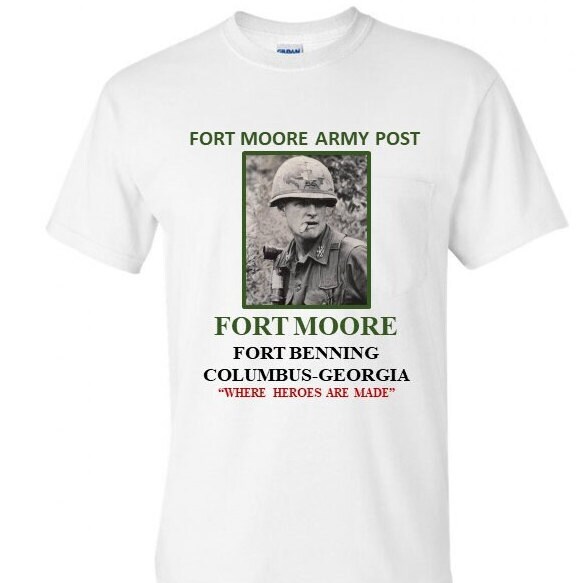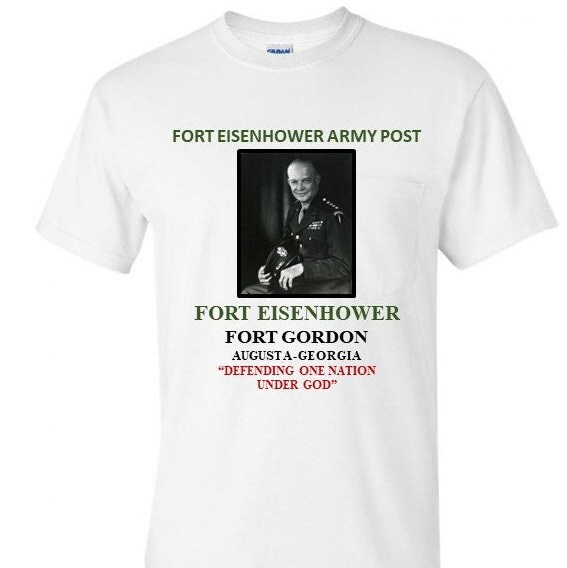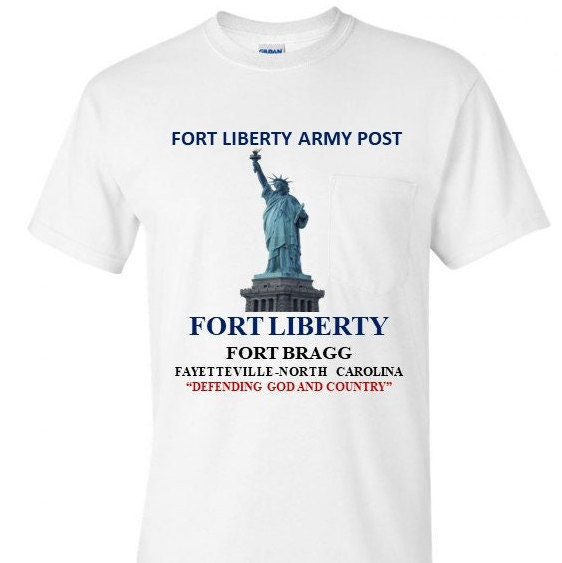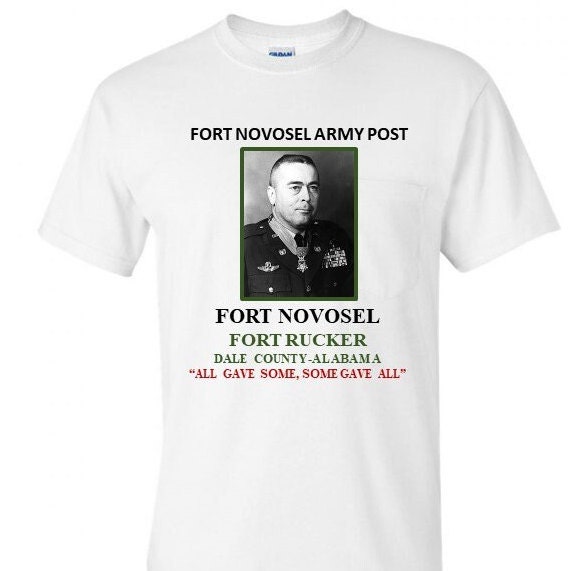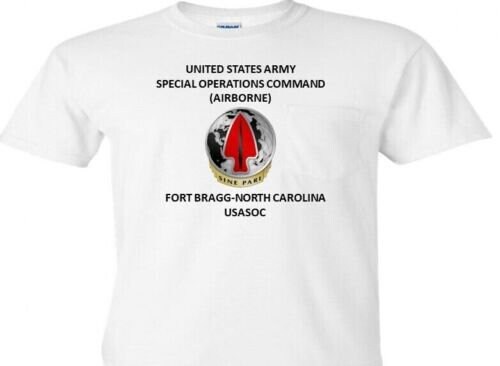Fort Moore Army Post *Fort Benning* Columbus-Georgia* Where heroes are made* Shirt
$32.35 $35.95
Fort Moore Army Post *Fort Benning* Columbus-Georgia* Where heroes are made* Shirt
FORT BENNING HAS BEEN RENAMED FORT MOORE.
“A Time For Prayer
"In times of war and not before,
God and the soldier we adore.
But in times of peace and all things righted,
God is forgotten and the soldier slighted."
-Rudyard Kipling”
A Fighter’s Faith: Prayer Prepared Him for Battle
Gen. Hal Moore, of We Were Soldiers fame, speaks to the Register.
Tim Drake
Inperson
July 1, 2008
Harold “Hal” Moore, Jr. (right) has reason to celebrate the Fourth of July — as anyone can see who has seen his story in the movie We Were Soldiers.
In that movie Moore, who commanded a brigade during the Battle of Ia Drang in Vietnam in November 1965, was portrayed by Mel Gibson. The film depicted the deep religiosity of the retired Army lieutenant general — as well as his abiding concern for each one of his men. What it didn’t show were the prayers of his mother that supported him — and the role military chaplains (see Chaplain’s Sainthood Cause, page 3) played in his story.
A recipient of the Distinguished Service Cross, Moore recently published A General’s Spiritual Journey, a collaboration with his driver, Toby Warren. He spoke with Register senior writer Tim Drake from his home in Auburn, Ala.
Tell me about your family. Where are you from originally?
I was born and raised in Bardstown, Ky. I was one of four children. My dad was a very devout Catholic. My mother was a Methodist, but when she married my dad she agreed to raise the children Catholic. We attended 6 a.m. Mass every morning at St. Joseph’s Cathedral.
Mom became very Catholicized. When I went off to the war in Korea and Vietnam, she went to the cathedral to light candles and pray at the Catholic Church. She became acquainted with the Catholic priests and would have Masses said for me and my men. My father died when she was 50 years old and she lived another 50 years without my dad.
Why did you decide to enter the military?
I had never given it a thought. One day, my father, who was an insurance agent, called me to his office and said, “Son, I’ve noticed you’re a Boy Scout leader, you love the outdoors and being in the forest camping. Have you ever thought of trying to get into West Point to be an Army officer?”
I had seen a couple of movies on West Point, but my father’s words gave me the goal of trying to get in. I was 16-years-old at the time. I started writing letters to congressmen and senators for an appointment to West Point.
How did your Catholicism shape you?
I had a good raising in the Catholic Church by the Sisters of Charity for eight years and at St. Joseph Prep School by the Brothers of St. Francis Xavier.
Catholicism always played a major part of my life. It has been a source of comfort and inspiration to me. In battle, and at other tough times, I called on God to help me, to protect me and my men, and to help me accomplish my mission.
I left home when I was 17 years old for a job in Washington, D.C. It took me 2½ years to find an appointment to West Point. When I got to West Point, I was lower than dirt.
I took a hard time on hazing. On Saturday afternoon, that first weekend, we were told that there was time for those of us who wanted, to go to Church. A number of the new cadets went to the non-denominational Cathedral at West Point. I went to Holy Trinity Chapel, the small Catholic chapel that was part of the Archdiocese of New York and not run by the Army.
In chapel that afternoon, I met Father Murdock. I found great comfort in going to Mass just about every morning. Those were in the days when you couldn’t eat before Communion. I would go into the mess hall at 6:30 a.m. All 2,500 cadets would be eating but me. Halfway through the meal, the orders would be published for the day. Once I had those, I would leave with a slice of cold toast in my cap, walk out of the mess hall, and go up the hill to the Catholic chapel.
I was an acolyte during my time at West Point and frequently served at Mass. After Mass was over, I would eat that cold toast.
The Catholic chapel was the major reason I was able to graduate from West Point. I wasn’t any good at mathematics. At night, taps was at 11 p.m. After taps, I would go into the bathroom and sit under a 40-watt light bulb studying differential equations until 1:30 a.m.
I couldn’t study it, but I could memorize it. I graduated at the bottom 20% of my class.
The Catholic religion has carried us through a lot of difficult times in our family, and still does. I broke my back in a helicopter crash in the Army. I try to go to Mass very frequently. If I can’t go, I go to the small chapel. I take a Rosary to bed with me every night. I get through one or two decades every night and then I’m gone. My faith has brought me through so many trials. It played a major role in getting me through two wars without being killed or gravely wounded, and now it’s getting me through my grief of having lost my wife of 54 years, four years ago. I derive a lot of comfort from going to church and know we will be together again in a far better place.
Tell me about your relationship with Father Murdock at West Point.
Father Murdock knew that plebes at West Point were treated pretty rough … we were hazed. The only relief we got was during Saturday afternoon inspections between 2:30 and 6 p.m. Sunday was a free day with no studying or classes. Father Murdock befriended all of us Catholic cadets. Plebes weren’t allowed to eat much in the mess hall. Father Murdock invited us to the rectory and offered us food. It was a refuge for us cadets — a place where we could listen to the radio, read magazines, say the Rosary. I became very close to Father Murdock. He was a great inspiration, and I named my fifth child David Murdock Moore, after him.
I would pray to the Blessed Virgin Mary daily. She got me through West Point. When I graduated, my first stop was the Catholic chapel, where I knelt in front of the Blessed Virgin Mary and thanked her for getting me through.
Soon after graduating from West Point, you took a three-day trip to the Abbey of Gethsemani in Kentucky. What was your purpose in taking this retreat?
My West Point education was, of course, invaluable. But I wanted to sit at the feet of the spiritually wise, to take in wisdom from the Lord. In a very short time I would be responsible for the lives of so many. I wanted to be separate, to be still, to prepare myself spiritually for the test I would soon be facing.
How did you meet your wife, Julie?
She was an Army brat, the daughter of a colonel. I was a second lieutenant in the 82nd Airborne Division. She was a student at the University of North Carolina at Chapel Hill. I met her during the summer of her senior year at the officer’s club swimming pool. I knew right away that she was the girl for me. She was beautiful with auburn hair. I was 27. She was 20. She enrolled in her senior year, but I would visit her two or three times a week. She finally gave up and we married in November 1949.
I lost her four years ago to cancer. She is buried at the Fort Benning cemetery next to Sergeant Gell Jack, who died in my arms after being shot through the chest by an enemy AK-47.
Tell me about the spiritual preparation for battle. Were there certain prayers that you said?
I always liked to say the Rosary, if there was time. I would always make a special prayer that we would accomplish our mission with a minimal loss of men. After the fight began, the time for prayers was finished.
What was it that you faced when you landed at Ia Drang?
The intelligence information we had on the enemy was that there were three battalions — 1,500 men — located in the very area where we were to land. These were enemies fresh off the Ho Chi Minh trail. They were early arrivals in the North Vietnamese army. Previously, the Americans had been fighting Viet-Cong guerillas. Now, we were faced with well supplied, well trained North Vietnamese soldiers.
When I received the intelligence information, I knew we were in for a fight. We were in an area where American soldiers had never been before, 14 miles from an American special forces camp. Within an hour after landing, we were in a serious battle that lasted for two nights and three days.
What did the military learn in the aftermath of the Battle of Ia Drang?
We learned what a tough enemy the North Vietnamese were. The North Vietnamese soldiers were determined to drive the Western foreigner out and were not afraid to die. I lost 79 men; 120 were wounded. When we were pulled out of there, we evacuated 600 North Vietnamese mortars, rifles, rocket launchers and hundreds of weapons. We left over 600 enemy soldiers lying on the ground. The movie showed us stacking them up, which we did not do.
I was the last man off the ground. When I looked down at the ground and saw all those enemy dead sprawled on the ground in unnatural positions, it occurred to me that God made those men too, and that they had wives and mothers.
We sent back the reports, and headquarters in Saigon made a decision which turned out to be dead wrong; to go into a battle strategy of attrition — to try to kill more enemies to the point where the enemy would give up. That did not work because the North Vietnamese were determined to drive the round-eyed foreigner out of Vietnam. That strategy was used for several years until finally General Westmoreland was made Chief of Staff and used another strategy, defending certain areas.
It was a very tough time for America. You can’t look at the Vietnam wall without thinking, “What a waste.” My hope is that every congressman and senator, when they drive down Independence Avenue to work on Capitol Hill and pass that wall, will take a good look at it and try to find another way to solve international problems rather than sending young Americans out with rifles to kill others. That strategy should have gone out of date several hundred years ago, but we’re still doing it today in Iraq and Afghanistan.
In your book, We Were Soldiers Once … And Young, you complained that “Every damn Hollywood movie got it wrong.” How did they get it wrong?
I tried to go to every one that came out to see how they did it. They never seemed to catch the brutality of war, the grief of the American solider, or the desolation and grief back home when that terrible telegram was delivered to the door of a family of a casualty. They never did quite get it right.
When Randall Wallace read my book, he called us up and said, “I want that movie.” We signed a paper that would authorize him to later make the movie. Three or four years later he decided it was time to make the movie. He made me and [co-author] Joe Galloway technical advisors. We marked up four or five different screenplays. When he selected Mel Gibson to play my role, Mel came to visit and talked to us for hours. He was determined to get it right. My wife, Julie, and I flew out to Hollywood four or five times to watch the film being made. We were consulted frequently on various scenes, and I think Mel did a great job.
The book contains this quote from a speech you once gave: “ I believe we al have turning points in our lives that can change the course of a life and one’s beliefs forever.” What was the major turning point in your life?
In my case, Nov. 14-16, 1965, those three days with my men in Ia Drang Valley, South Vietnam, determined my direction for the next 40 years. In those three days of face-to-face combat, I witnessed the loss of 79 of our young soldiers.
Holding a young sergeant as he died and watching other soldiers as they fell changed me forever. Ask any soldier who has fought for his or her country. They know; you are never the same.
From that turning point in 1965, I knew that I wanted to continue living for a better America. My beliefs became my road map for living. Today, at 85 years, I can connect what I believe, what I have done with my life, and what I am doing to that turning point. More than anything else in life, I believe in God the Almighty and his hand in the turning points of every journey.
In A General’s Spiritual Journey, you said that you’re in the business of eternity. What do you mean by that?
My driver, Toby Warren, came to me one day with a draft of this booklet. I told him that if it will help save one soul, let’s print it up. We’ve printed up 70,000 to send to soldiers in Iraq and Afghanistan.
Lt General Harold G. Moore (USA-Ret)
February 13, 1922 – February 10, 2017
Gravesite: Section C, Site 259 at the Fort Benning Post Cemetery, Fort Moore, GA, USA
y_Moore_009Hal’s story began in Bardstown, Kentucky; a tiny community tucked in the foothills of the Ohio River Valley. His generation grew up hearing the harrowing tales of the Great War, the decadence of the Roaring Twenties, and experiencing the hardships of the Great Depression. Hal learned to appreciate the value of hard work and took various odd jobs to help make ends meet – cutting grass, caddying and even being a waterboy at the Guthrie Distillery Warehouse.
Unlike most teenagers of his day, Hal had a voracious appetite for reading and took a keen interest in all things military. When he wasn’t working, fishing or playing sports, Hal was at the library, devouring any book he could find on military history. Prompted by his father, Hal crystallized his goal of attending USMA when he was 15. In 1940, he accepted a patronage job at the Senate book warehouse that required him to drop out of high school and travel to DC while severely sick with the flu to meet the start date. Hal finished school at night and walked the halls of Congress in search of an appointment. Two years later, he obtained one to the USNA. Not wanting to settle, he convinced a Georgia Congressman to swap an unobligated USMA slot for Hal’s USNA from Kentucky.
After graduation, Hal served on occupation duty in Japan with the 11th Airborne Division. He returned to the 82nd Airborne where he married the great love of his life, Julie Compton. Bored with peacetime duty, Hal transferred to the Field Forces Board where he tested parachutes; surviving multiple malfunctions, including being hung up and towed behind a plane. Deployed to the Korean War in 1952, he joined the 7th Infantry Division where he commanded Rifle and Heavy Mortar companies, served as a Regimental S3, Division Assistant G3, and was awarded two Bronze Star Medals for Valor.
Subsequent assignments included teaching tactics at USMA, developing airborne and air assault equipment in the Pentagon, and a tour of duty in Norway where he planned the ground defense of Northern Europe. After attending the Naval War College, Hal took command of the 2nd Battalion, 23rd Infantry in the 11th Air Assault Division (Test) focused on developing the air mobility operational framework. In 1965, the battalion was designated the 1st Battalion, 7th Cavalry and deployed to Vietnam as part of the 1st Cavalry Division.
Hal is best known for his leadership in the first major battle of the Vietnam War in the Ia Drang Valley in November 1965. Within 20 minutes of landing at LZ X-RAY, the 7th Cavalry, vastly outnumbered, was assaulted by hundreds of enemy furiously determined to over-run the LZ. After a three-day bloodbath, the enemy quit the field, leaving over six hundred of their dead. Hal was awarded the Distinguished Service Cross for his actions during the fight. Promoted to Colonel, Hal assumed command of the 3rd Brigade and led it through several campaigns in 1966. Often on the ground sharing the risks with his troopers and setting the example, he earned another Bronze Star Medal for Valor as well as three individual awards of the Vietnamese Cross of Gallantry with Palm. Hal loved soldiers deeply. When Bardstown announced it would celebrate his return with an elaborate “Hal Moore Day,” he refused to participate unless the event was changed to “Vietnam Veteran’s Day.”
In 1968, Hal pinned on his first star and led the planning for the Army’s withdrawal from Vietnam. He returned to Korea in 1969 as the Eighth Army G3 was frocked to Major General and given command of the 7th Infantry Division to straighten it out after it was fractured with insubordination and race riots. Over the next year, Hal rebuilt the Division back into a capable fighting force. In 1971, he took command of the Training Center at Fort Ord, CA in the era of the Vietnam antiwar demonstrations, drug problems, racial tensions and the transition to the modern volunteer Army. Hal applied lessons learned from Korea to create another successful outcome. In 1974, Hal was promoted to Lieutenant General and assigned as the DCSPER where he was most proud of actions he took to rebuild an NCO Corps almost destroyed by the Vietnam War.
Following retirement in 1977, he worked as the Executive VP of the Crested Butte Mountain Resort in Colorado. In 1981, he turned his attention to researching his 1992 New York Times Bestselling book on the Ia Drang battles; We Were Soldiers Once… and Young. In 2002, the book was the basis of the acclaimed movie, We Were Soldiers, in which Mel Gibson portrayed Hal. Throughout these years, Hal shared his combat leadership experiences and principles with soldiers in countless seminars. USMA recognized his character and contributions in 2003, designating him a Distinguished Graduate. Hal’s other books were We are Soldiers Still and Hal Moore on Leadership.
Hal was a dedicated outdoorsman who loved to ski, hike, camp, and fish. He was known for his finely tuned sense of humor; earning the nickname of “Captain Fun” from his grandchildren. He would routinely send them funny postcards, add humorous annotations to children’s books for them to discover as well as hide small toys around his home in anticipation of visits.
Hal was a courageous leader, loving husband, and father whose life exemplified the Academy credo of Duty, Honor, Country. His memory lives on in his writings as well the hearts of the soldiers he inspired and mentored during his long, challenging life.
Shipping from United States
Processing time
3-5 business days
Customs and import taxes
Buyers are responsible for any customs and import taxes that may apply. I'm not responsible for delays due to customs.
Payment Options
Returns & Exchanges
I gladly accept exchanges and cancellations
Just contact me within: 14 days of delivery
Ship items back to me within: 21 days of delivery
Conditions of return
Buyers are responsible for return shipping costs. If the item is not returned in its original condition, the buyer is responsible for any loss in value.
